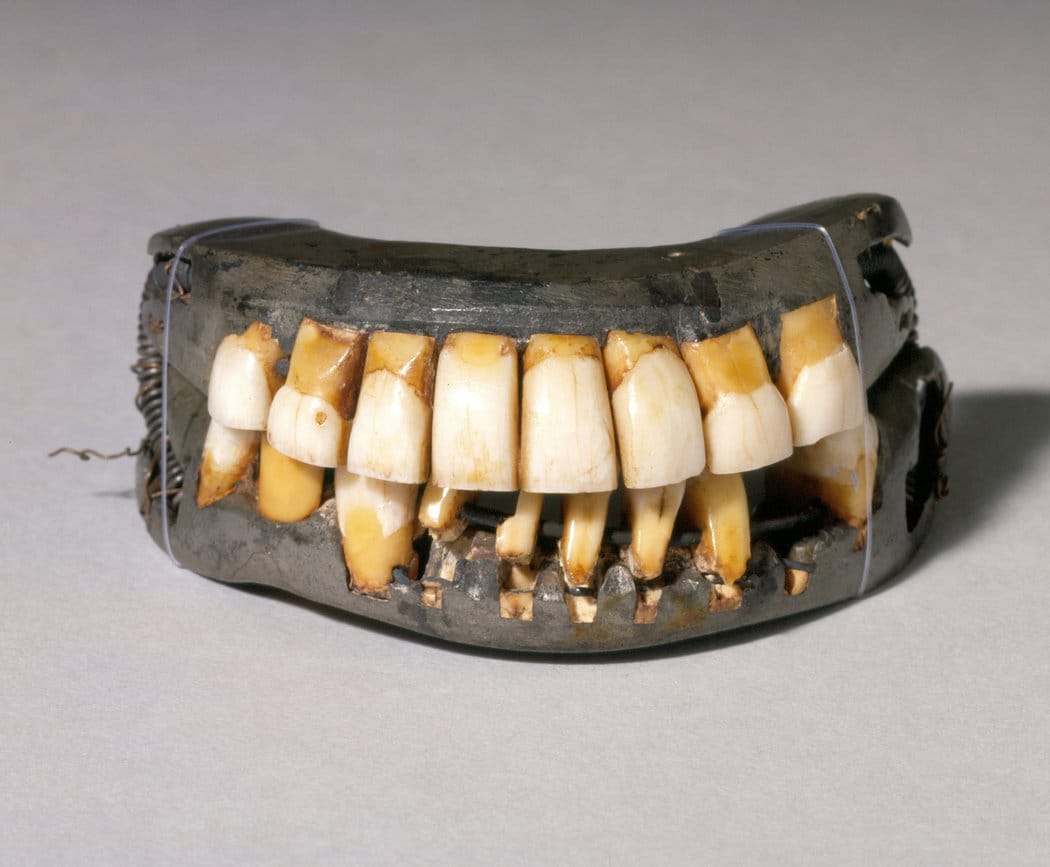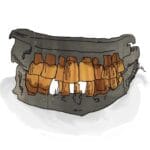Uncovering the Reality of Washington’s Dentures
You’ve likely heard the tales–George Washington sporting a set of wooden teeth. But get ready for a history lesson because the truth is far more captivating! While Washington did struggle with dental woes, his dentures weren’t made of wood. Let’s delve into the real story behind his famous (or infamous?) chompers.
It’s true that Washington’s teeth weren’t exactly pearly white, which may be how the wooden teeth myth took root. Imagine what your own smile might look like after years of 18th-century dental care – yikes!
Instead of wood, Washington’s dentures were crafted from a surprising mix of materials:
- Ivory: Often sourced from hippos or walruses, ivory was a popular choice due to its strength and resemblance to human teeth.
- Animal Bones: Cow and horse bones were more readily available and provided a sturdy foundation for dentures.
- Human Teeth: This is where things get ethically complex. Some historians believe Washington’s dentures included teeth purchased from enslaved people, a stark reminder of the era’s troubling practices.
What Did George Washington’s Smile Look Like?
Imagine this: dentures crafted from gleaming hippopotamus ivory, inlaid with real human teeth, and held together with gold and metal! That’s right, Washington’s dentures were a testament to the dental technology of the time – and they were far from simple.
Why did he need dentures at all? Washington’s dental problems began in his twenties, likely due to a combination of genetics, diet, and the less-than-ideal dental practices of the 18th century. By the time he became president, he had only one natural tooth remaining! Imagine the discomfort and pain he must have endured.
It’s believed that these dentures significantly affected how Washington spoke and even his public appearance. Some historians even suggest that his dental issues might have influenced some of his decisions as president!
A Glimpse into 18th-Century Dentistry: What Were Dentures Made Of?
Dentures in the 1700s were a far cry from the modern dental marvels we know today. Imagine materials like elephant or hippopotamus ivory – a stark contrast to the materials used now. And here’s where it gets even more intriguing: some dentures were actually fashioned using real human teeth! Often, these teeth were acquired from individuals who sold them out of necessity or were extracted from the deceased.
But it wasn’t all ivory and human teeth. Dentists also used animal teeth, typically from cows or horses, to create these early dentures. To hold everything together, gold and silver wires and springs were used, while lead often formed the base of the denture.
Busting the Myth: The Real Story of Wooden Dentures
Let’s address the elephant (or rather wooden tooth) in the room – wooden dentures were never a widespread practice! The myth likely stems from the staining of ivory, which could take on a grainy, wood-like appearance over time.
So, why didn’t people use wood for dentures? Wood is porous, absorbs moisture, warps easily, and is prone to rot–not exactly ideal for something you put in your mouth!
The persistent myth of Washington’s wooden teeth highlights the power of captivating narratives, even if they aren’t entirely accurate. It serves as a reminder to always dig a little deeper and uncover the real story behind historical legends.
The Quest for the Perfect Smile: A Denture Timeline
The desire for a complete smile is nothing new. Throughout history, people have sought ways to replace missing teeth, leading to a fascinating evolution of materials and techniques:
- Ancient Origins: Evidence suggests that the Etruscans (around 700 BC) crafted dentures using gold and animal teeth.
- 18th & 19th Centuries: The rise of professional dentistry led to experimentation with materials like porcelain.
- 20th Century Onward: The development of acrylic resin revolutionized dentures, providing a more durable and natural-looking option. Advancements in implants and dental care shifted the focus toward tooth preservation.
The Significance of Washington’s Dentures
George Washington’s dentures, though not wooden, remain a source of fascination and provide a tangible link to the past. They offer valuable insights into:
- 18th-Century Dental Practices: Washington’s dentures illustrate the materials and techniques available during this era and shed light on the challenges people faced with tooth loss.
- Ethical Considerations: The use of human teeth in early dentures raises complex ethical questions about consent, bodily autonomy, and the exploitation of vulnerable populations.
- Social Perceptions of Oral Health: Dentures, even rudimentary ones, played a role in social interactions and perceptions of age, beauty, and status.
Beyond the Myth: The Enduring Legacy of Dentures
While the myth of wooden teeth persists, the true history of dentures is a testament to human ingenuity and the ongoing quest for a healthy, confident smile. From carved ivory and ethically questionable human teeth to modern implants and bioengineered solutions, the journey of denture technology reflects advancements in dentistry and changing social perceptions of oral health.
- Jerry McSorley’s Post-Divorce Life: New Beginnings - July 16, 2025
- The Rise and Fall of the New Haven Nighthawks: A Minor League Hockey Legacy - July 16, 2025
- Unlock Jerry McSorley’s Career Highlights: Eye Tax Inc.’s Solar Success - July 16, 2025
















